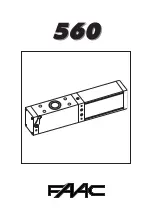
12
OPERATION OF YOUR OPENER
Your opener can be activated by any of the following
devices:
• The ACTIVATION button
Press the button until door starts to move.
• The wall control, outside keyswitch or keyless
entry system (if you have installed any of these
accessories).
• The Transmitter or Wireless Wall
Control (E128M)
Hold the push button down until the door starts to move.
When the opener is activated by transmitter,
ACTIVATION button or wall control:
• If open, the door will close. If closed, the door will open.
• If closing, the door will stop.
• If opening, the door will stop (allowing space for entry
and exit of pets and for fresh air).
• If the door has been stopped in a partially open or
closed position, it will reverse direction.
Obstruction behaviour:
• If an obstruction is encountered while closing, the door
will reverse.
• If an obstruction is encountered while opening, the door
will reverse and stop.
• The optional Protector System™ uses an invisible beam
which, when broken by an obstruction, causes a closing
door to open and prevents an open door from closing. It
is STRONGLY RECOMMENDED for homeowners with
young children.
Opening the door manually:
The door can be opened manually by pulling the
release cord down firmly.
To re-engage the door, pull the release cord down firmly.
The opener light will turn on:
• when opener is initially plugged in;
• when the power is briefly interrupted;
• when the opener is activated.
• when IR Beams are triggered with the door in the
Open position.
(the light turns off automatically after 2-1/2 minutes.)
MAINTENANCE OF YOUR OPENER
Once a Month:
• Repeat safety reverse test.
Make any necessary adjustments
(section 13).
• Manually operate door. If it is unbalanced or
binding, call for professional garage door
service.
• Check to be sure door opens and closes fully.
Set limits and/or force if necessary.
SPECIAL NOTE: Chamberlain strongly recommends that the Protector System
TM
be installed on all garage door openers.
CARE OF YOUR OPENER
When properly installed, your opener will operate
with minimal maintenance. The opener does not
require additional lubrication.
Limit and Force Settings: These settings must be
checked and properly set when the opener is
installed. Weather conditions may cause some
minor changes in the door operation, requiring
some re-adjustments, particularly during the first
year of operation. Refer to limit and force setting in,
section 13.
Follow the instructions carefully and repeat the
safety reverse test after any adjustment.
Transmitter:
Additional
transmitters
can
be
purchased at any time. Refer to Accessories. Any
new transmitters must be programmed into the
opener.
Transmitter battery:
If
transmission
range
decreases, replace the battery.
SPECIFICATIONS MR850EVO
Input Voltage:
230-240 VAC, 50 Hz, 170 W
Rated Load:
32 Nm
Max.Pull Force:
550 N @ O300 mm
Standby Power:
<1 Watt
Drive:
DC gearmotor permanent
lubrication
Max. Drum Rotations:
4
1/2
Memory Registers:
64
Operating Frequency:
433.30/433.92/434.54 MHz
Door should be fully closed if possible.
Weak or broken springs could allow an
open door to fall rapidly. Property damage
or serious personal injury could result.
SPECIFICATIONS MR650EVO
Input Voltage:
230-240 VAC, 50 Hz, 100 W
Rated Load:
25 Nm
Max.Pull Force:
500 N @ O300 mm
Standby Power:
<1 Watt
Drive:
DC gearmotor permanent
lubrication
Max. Drum Rotations:
4
1/2
Memory Registers:
64
Operating Frequency:
433.30/433.92/434.54 MHz





































